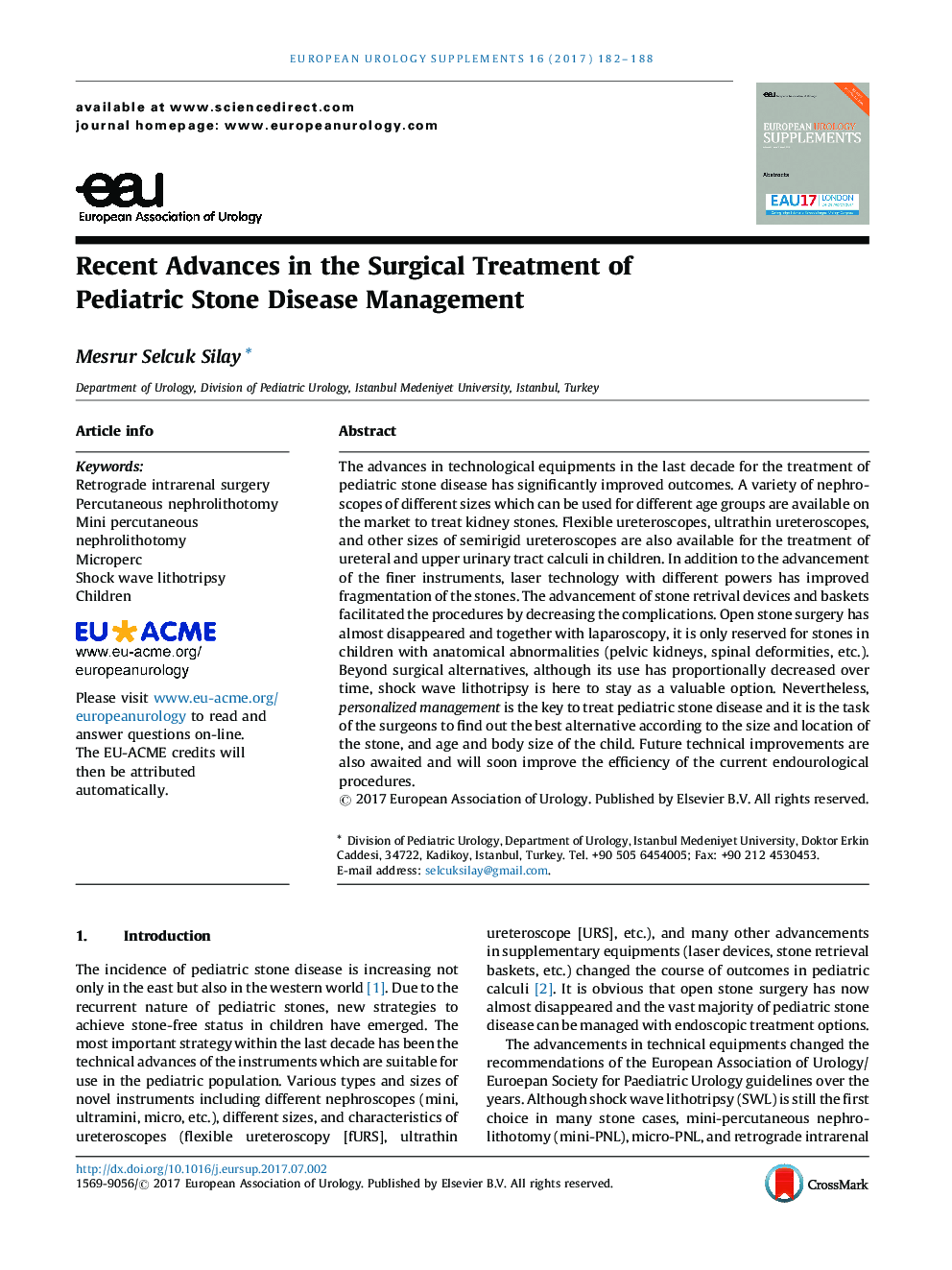| Article ID | Journal | Published Year | Pages | File Type |
|---|---|---|---|---|
| 5689877 | European Urology Supplements | 2017 | 7 Pages |
Abstract
The advances in technological equipments in the last decade for the treatment of pediatric stone disease has significantly improved outcomes. A variety of nephroscopes of different sizes which can be used for different age groups are available on the market to treat kidney stones. Flexible ureteroscopes, ultrathin ureteroscopes, and other sizes of semirigid ureteroscopes are also available for the treatment of ureteral and upper urinary tract calculi in children. In addition to the advancement of the finer instruments, laser technology with different powers has improved fragmentation of the stones. The advancement of stone retrival devices and baskets facilitated the procedures by decreasing the complications. Open stone surgery has almost disappeared and together with laparoscopy, it is only reserved for stones in children with anatomical abnormalities (pelvic kidneys, spinal deformities, etc.). Beyond surgical alternatives, although its use has proportionally decreased over time, shock wave lithotripsy is here to stay as a valuable option. Nevertheless, personalized management is the key to treat pediatric stone disease and it is the task of the surgeons to find out the best alternative according to the size and location of the stone, and age and body size of the child. Future technical improvements are also awaited and will soon improve the efficiency of the current endourological procedures.
Keywords
Related Topics
Health Sciences
Medicine and Dentistry
Obstetrics, Gynecology and Women's Health
Authors
Mesrur Selcuk Silay,
